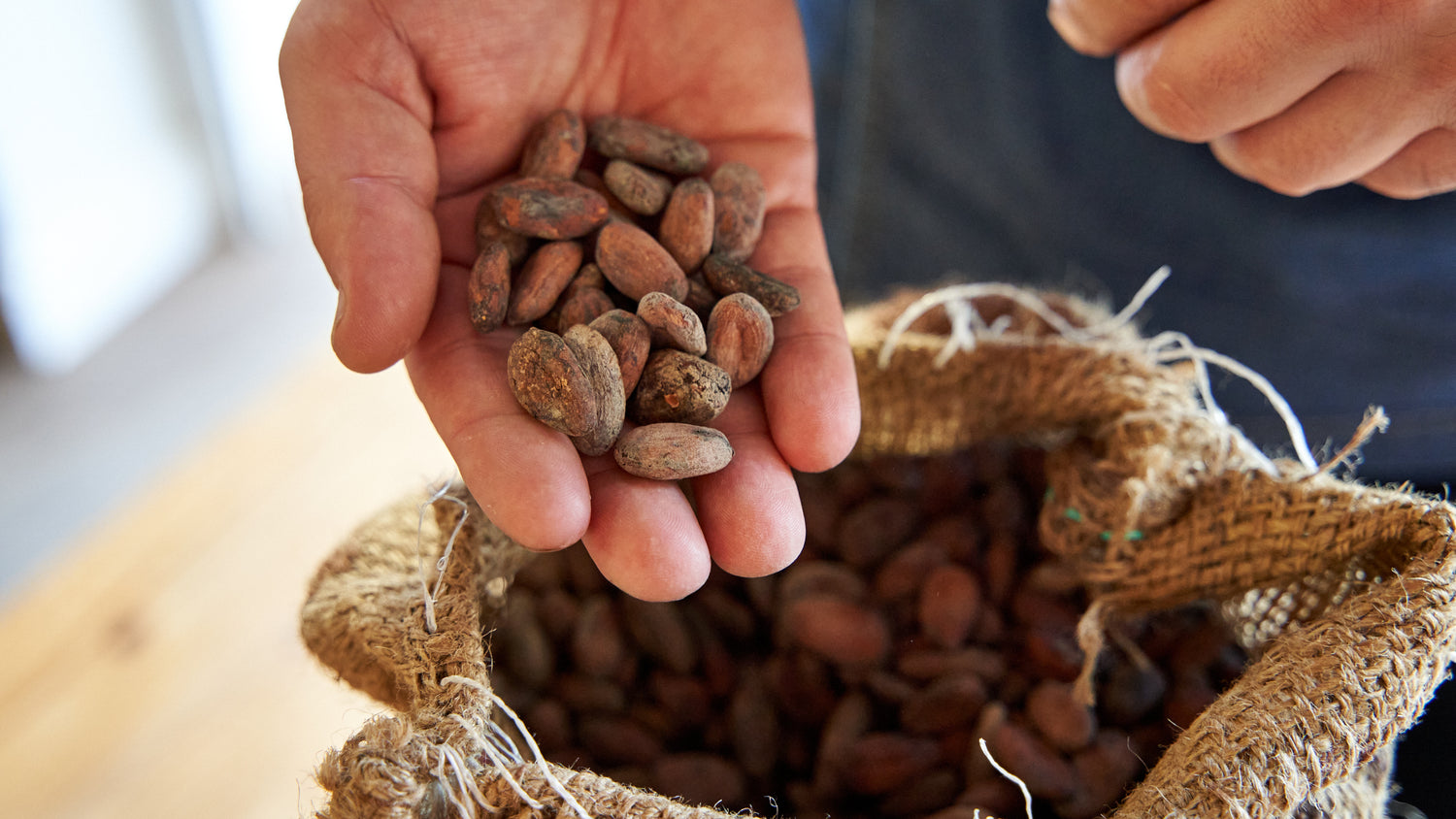
In a small village in Provence exists a unique chocolate maker. Mathieu Taborcia is a man after quality. His is not a pursuit of sweet chocolate that sells quickly. His is an exigent process - from cocoa bean to the final product - to make the finest of chocolate, suffused with complexity and a harmony of notes.
I visited Mathieu’s beautiful shop and workshop, where he actually makes the chocolate for which he has become famous.
How did you discover the world of chocolate making?
I started in patisserie making. I was trained as a pâtissier. Even earlier, I made many cakes as a boy before I sought out the work in my career. I didn’t know the true taste of chocolate, the true complexity of it. It was in working as a pâtissier that I discovered chocolate and worked to tame it, if you will, and I wanted to dig deeper.

Can you show us the shop and what you do?
We founded the chocolate shop here in Lambesc, France in 2018. It wasn’t just a chocolate shop of course; we wanted to have a separate atelier for the chocolate making itself.
We have several collections in our shop. We have beautiful little boxes with assorted flavors, ganaches, praline creations. We also have our “bean to bar” collection - which is literally bars that are made starting from the cocoa bean itself to ultimately become a bar of chocolate.

Then we have our ‘gourmandises’ - caramelized chocolate, chocolate-covered oranges, chocolate financiers, chocolate mendiants. In summer we also do ice cream flavors - especially important here in Provence with the hot weather. Chocolate is the theme that weaves everything we do together.

Tell us the story of how to make chocolate:

1. GROWTH
When we receive the cocoa beans, they have already been through several steps with their growers. The cocoa tree is a fragile and complex tree. It needs the protection of a canopy of other trees, so we always favor trees that are in their natural setting and not in an industrial or heavily farmed context. Producers who produce in that kind of environment allow us to give the chocolate the most complexity and flavor.

2. HARVEST/SHELLING
A cocoa fruit looks like this. The objective when they are harvested is to cut them in half and take out the white casing/skin inside, which also contains the beans. This pulp pod, mucilaginous pulp - it is called, does not taste like chocolate at all, of course. It has a very fruity taste, but inside the pulp we find the actual cocoa beans. There are many varieties of this fruit and its beans.

3. FERMENTATION
The fruit is then macerated for the process of fermentation. The beans are fermented naturally in wooden boxes covered with banana or tobacco leaves. The fruit ferments well in this context and will develop the notes and flavors that exist in the beans, and will be enhanced with this process. Chocolate is like wine in this way - the fermentation gives true and complex flavor to what we make.
4. DRYING
Once the fruit has fermented, the beans are dried. This happens in many places around the globe, but one of the most aesthetic examples is the small Venezuelan village called Chuao. There, the beans are laid out in the square of the town’s church. It is a perfect environment for this: the mix of wind, sun and facing the sea - perfect conditions and is quite a beautiful sight to see. We need the beans to dry because otherwise they would mildew with the moisture from the fermentation process.

5. TRANSPORT
The beans are then shipped to their various end points - Lambesc for our chocolate shop. They arrive in jute sacks. We need to sort the bags we receive to remove any of the beans that aren’t ideal after the fermentation and drying processes. We taste them to gauge their quality and their potential. We also sort the beans by size. Each batch needs to be relatively homogeneous to achieve a consistent roasting.

6. ROASTING
Three flavors exist in chocolate. The notes from:
1) the variety of tree/fruit
2) fermentation process
3) roasting process
The roasting process is delicate because we want to be sure not to denature the first two processes that came before. A very low and steady heat is required to awaken the new (third) flavor and our signature on the end product. If we burn the beans during roasting, we literally eliminate the first two flavors.
Chocolate makers who use beans of minimal quality often use the roasting process to cover the mediocrity of the beans themselves, burning the beans and then loading the chocolate with cream and sugar or vanilla and it creates a chocolate that is sweet, but not at all high quality or complex in its nature.


We favor a roasting process that is uses as low-heat as possible, which really keeps the flavor of the beans in tact. In this batch we will roast them at 110 C, not higher. We process about 15 kilos of cocoa beans at a time.
We adjust the roasting time and the temperature for each batch. We roast for 10 - 25 minutes depending on the size of the beans and their nature, but never longer than that. It is a process of trial and error.



7. BEAN CRUSHING
After roasting, we break open the cocoa beans to use the heart of what is inside. In a bean there is this little casing, we break that and then that paper-thin casing falls away leaving the ‘meat’ of the cocoa. We have a machine that breaks open the beans and then we are left with just the raw cocoa, which is used for the chocolate itself. The beans contain 50% butter, in fact, so everything we need to liquefy the bean is already contained inside.



8. CONCHING
Conching is the process that kneads cocoa nibs into liquid form. The solid bits of the bean left from the crushing step are fed into a machine that is not heated, but functions through friction - a polish of sorts. This machine is not unlike the sea when it polishes stones that rolls in its waves. The cocoa becomes smooth and unctuous through the use of continual turning wheels and friction.
The granite grinding wheel turns at a high rate and liquefies the chocolate. In this example, we will keep the machine spinning for 32 hours - in the first hours there will only be cocoa beans, then we add sugar (depending on the percentage of chocolate/sugar). But the time can also be longer, especially with beans that have a stronger flavor, from Ecuador for example, up to 72 hours. There are multiple settings on this machine to adjust the pressure in the stones, which will affect the viscosity of the chocolate.

9. MOLDING
The final step is molding the chocolate into bars or small squares. If it is the small chocolates for the box, we enrobe them in a very fine layer of chocolate.







